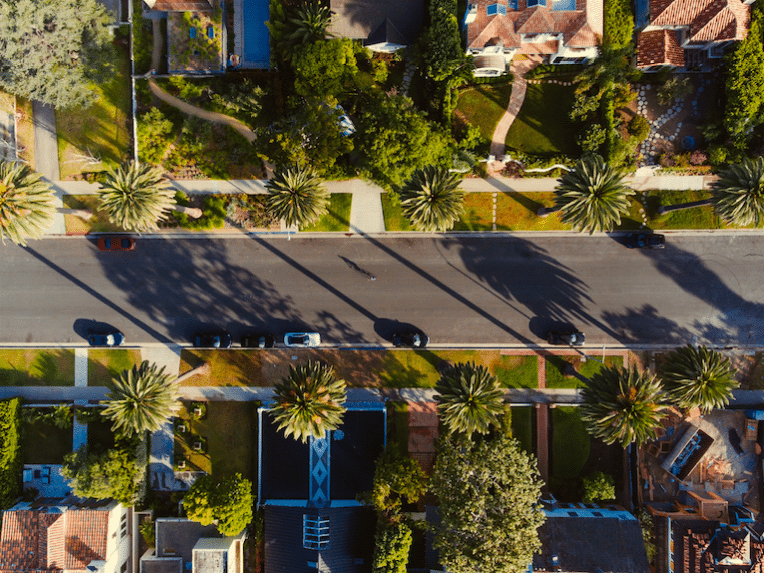Measuring Mutual Fund Risk with Alpha, Beta, Standard Deviation and Sharpes Ratio
Contents:


Sharpe ratio is an accurate method to evaluate the efficiency of a fund against a unit level of risk. The higher a portfolio’s Sharpe ratio, the greater its risk-adjusted-performance. If you get a negative Sharpe ratio, however, then it implies that you will be safer suited to investing in a risk-free asset than the one you are actually investing in. Additionally, the use of standard deviation in the Sharpe ratio formula imposes its own set of limitations because standard deviation assumes an approximately symmetric return distribution. For funds with asymmetric returns, standard deviation can be a problematic measure of volatility. The Treynor ratio also uses a different denominator compared to the Sharpe ratio.
This ratio considers only the standard deviation of downside risk instead of the total standard deviation of portfolio returns. Only negative deviation of a portfolio’s return is considered since it gives a better view of risk adjusted portfolio performance. To calculate the Sharpe ratio, subtract the risk-free rate of return from the expected return from a mutual fund. Then divide that difference by the mutual fund portfolio’s standard deviation. At the end of the year, you can use the Sharpe ratio to look at the actual return rather than the predicted return. Sharpe ratio is one of the most powerful tools used in mutual fund selection.
This implies that the fund produces an additional return of 2 for every additional unit of risk taken. To maintain its Sharpe ratio at high levels, a fund with a larger standard deviation would need to produce higher returns. As long as a fund has at least 36 months’ worth of data, Morningstar calculates a fund’s Sharpe ratio for the one-, three-, five-, and 10-year periods. The Sortino ratio was named after Frank A. Sortino, and is just another variation of the Sharpe ratio.
How to calculate the Sharpe ratio of a portfolio?
It is negative sharpe ratiod by dividing the excess returns over the benchmark return with the standard deviation. Developed by the Nobel Prize-winning economist William F. Sharpe, the Sharpe ratio measures the additional returns you can earn from an asset by exposing yourself to its risks. Now, some metrics assess the risk-adjusted return of an asset to analyse whether it is a suitable investment avenue.
It helps in comparing different funds which might be giving similar returns but the exposure to risk might be much more in one of them. Sharpe ratio comes very handily to measure the risk-adjusted returns potential of a mutual fund. Generally, risk-adjusted return happens to be the returns earned over and above the returns generated by a risk-free asset like a fixed deposit or a government bond. The excessive returns are viewed in the light of the “extra risk” which an investor takes upon investing in a risky asset like equity funds. The Sortino ratio, simply a modification of the Sharpe ratio, was named after Frank A. Sortinois. Here, the portfolio return is divided by something known as the “Downside Risk” – the negative returns of a portfolio.
- The higher the ratio, the better the investment return with respect to the risk taken.
- Basically, this ratio tells an investor how much extra return he will receive on holding a risky asset.
- The present risk-free fee is 3.5%, and the volatility of the portfolio’s returns was 12%, which makes the Sharpe ratio of ninety five.8%, or (15% – three.5%) divided by 12%.
- Sharpe ratio is a comprehensive mechanism to ascertain the performance of a fund against a given level of risk.
- For instance, let’s take a portfolio that comprises 50 per cent equity and 50 per cent bonds with a portfolio return of 20 per cent and a standard deviation of 10 per cent.
This will not only give you a better understanding of risk and volatility, but also help you choose a better fund when you are looking at various mutual fund offer documents. Let us take a look at some key tools or ratios that measure this risk. For investors seeking to assess the risk and return trade-off of multiple mutual funds, it may be useful to utilize a metric that enables comparison. The Sharpe Ratio, created by Nobel laureate William F. Sharpe, is one such metric.
It does not indicate whether the portfolio is concentrated in a single sector. The higher the Sharpe ratio of a portfolio, the greater its risk-adjusted-performance. Several funds are operating in India, and selecting a mutual fund can be challenging, especially for newbies with less market knowledge. They can try to boost their risk-adjusted free returns by lengthening the time horizon for measuring the ratio. This gives a clear picture to the investors, and they get to know if the risk they take is giving good returns or not.
How is Sharpe Ratio used to select Mutual Funds?
The above-given table shows the indicators of the good and bad Sharpe Ratio. Investments having less than 1.00 do not generate higher investor returns. The more returns generated by the fund during the same time will be 2.00%. The R-squared of an index fund, investing in same securities and in the same weightage as the index, will be one. A beta of more than 1.0 indicates that the investment will be more volatile than the benchmark index. It is an aggressive fund that will move up more than the benchmark, but the fall will also be steeper.
Why Portfolio Diversification Helped Investors in 2022 – Morningstar
Why Portfolio Diversification Helped Investors in 2022.
Posted: Mon, 10 Apr 2023 07:00:00 GMT [source]
Furthermore, it helps an investor understand if the excess returns of a portfolio are because of the wise investment decision or because of the high risk. The Sharpe ratio is the return of a portfolio minus a danger-free rate of return, divided by the portfolio’s standard deviation. The ratio helps standardize the returns of managers within the same asset class to allow them to be in contrast on a danger-adjusted foundation. The formulation principally divides returns by the volatility of the returns . The Sharpe ratio is the ratio of the distinction between the imply of portfolio returns and the danger-free price divided by the standard deviation of portfolio returns. In case an investor prefers to calculate it himself, one needs to deduct the risk-free return from the portfolio return, which is defined as the excess return.
Additionally, the standard deviation assumes that price movements in either direction are equally risky. The Sharpe ratio gives the return delivered by a fund per unit of risk taken. Therefore, an investment with a higher Sharpe Ratio means greater returns.
Voluntary Retirement Scheme Guide 2023 – Eligibility Criteria, Benefits, Etc.
Note that both standard deviation and the Sharpe ratio are ultimately annualized figures. Click here to learn more about how Morningstar calculates the Sharpe ratio and standard deviation. Squaring off is a trading style used by investors/traders mostly in day trading, in which a trader buys or sells a particular quantity of an asset in the hope of earning a profit. A common limitation of all accounting ratios is that it is backward looking and is based on historical returns.
IGD: International Equity CEF, 9% Yield (NYSE:IGD) – Seeking Alpha
IGD: International Equity CEF, 9% Yield (NYSE:IGD).
Posted: Fri, 21 Apr 2023 07:00:00 GMT [source]
The Sharpe Ratio does not capture other aspects of risk, such as liquidity risk, credit risk, or market risk, that may affect the performance of the fund. In this blog, we will explain the Sharpe ratio in detail and understand how you can use the ratio to make better investment decisions. Usually, any Sharpe ratio greater than 1.0 is considered acceptable to good by investors. While this kind of security has the least volatility, some argue that the risk-free safety ought to match the period of the comparable investment.
It is used to measure the dispersion of the actual return from the mutual fund’s expected return. The Sharpe Ratio formula takes the denominator’s standard deviation of mutual fund returns to achieve its value. The Sharpe Ratio can be used by investors as a technique for assessing the need for diversification of portfolios. If an investor is investing in a 2.00 Sharpe Ratio fund, it would help to reduce the ratio and risk factor by adding another fund to his portfolio. Standard deviation takes into account both the positive as well as the negative deviation in returns from the mean, hence it doesn’t accurately measure the downside risk.
Measures like Sortino, which only considers negative deviation from the mean return, can remove the limitation of Sharpe ratio to some extent. Measures how well the fund has performed vis-a vis the risk taken by it. It is the excess return over risk-free return divided by the standard deviation. The higher the Sharpe Ratio, the better the fund has performed in proportion to the risk taken by it. The right mutual funds for your long-term goals with inflation-beating growth plus risk management. Suppose a fund is made of only technology stocks and sector performs well.
Standard deviation takes under consideration both the positive in addition to the adverse deviation in returns from the mean, therefore it doesn’t accurately measure the downside danger. Measures like Sortino, which only considers unfavorable deviation from the imply return, can take away the limitation of Sharpe ratio to some extent. The Sharpe ratio, nevertheless, is a relative measure of threat-adjusted return. The Sharpe ratio, however, is a relative measure of risk-adjusted return. If considered in isolation, it does not provide much information about the fund’s performance. Moreover, the measure considers standard deviation, which assumes a symmetrical distribution of returns.
Sharpe Ratio; Risk vs. Reward
We know that over many rolls, the most common result from the dice will be 7 and the least common results will be 2 and 12. The greater a portfolio’s Sharpe ratio, the better its risk-adjusted performance. If the analysis results in a negative Sharpe ratio, it either means the risk-free rate is greater than the portfolio’s return, or the portfolio’s return is expected to be negative. In either case, a negative Sharpe ratio does not convey any useful meaning. One of the limitations of the Sharpe ratio is that it is based on standard deviation. But what we need to be mindful of is that the SD takes into account all types of returns of the fund, i.e., both negative and positive deviations from average or mean.
The ratio reflects the average return received above the risk-free rate per unit of uncertainty or total risk. When an investment has an asymmetrical return distribution, with either positive or negative skewness, Sharpe ratio is not an appropriate measure of risk adjusted return. It tries to find out the excess return generated by a mutual fund over and above a risk-free rate of return such as an RBI bond or a post-office savings scheme, etc.
Sortino ratio removes the effects of price movements that move upwards.. Instead, it shows you the returns that are lesser than the required return. It comes with an assumption that risk equals volatility which is a very narrow way of looking at all investments. Portfolios with higher rates of risk might have a metric of 1, 2, or 3.
This ends in a Sharpe ratio of 5.four [(23.6% – 1.25%) / 4.2%] which is in the 98th percentile over the past 25 years. This means that solely 2% of the time has the Sharpe Ratio been larger than it is at present. Anything is possible going forward however our counsel to traders would be to expect lower Sharpe ratios due to lower returns, larger volatility, or both.
Ultimately, you get to know how well are you being compensated for the risk that you are taking in the investment. CAs, experts and businesses can get GST ready with ClearTax GST software & certification course. ClearTax can also help you in getting your business registered for Goods & Services Tax Law. However, it can change the equation because a fund giving 5% returns with moderate volatility is always better than a fund having 7% returns with high volatility. However, in the case of a fund with a Sharpe Ratio of 1.00, adding another fund to the portfolio may not be the ideal one.

Since the Sharpe ratio for Fund B is higher than Fund A, Fund B is a better investment option. 2) It considers all the investments to have a normal pattern for the dispersion of returns, but funds may have different dispersion patterns. Suppose, if an investor is invested in a fund with a Sharpe Ratio of 2.00, adding other funds to the portfolio would help reduce ratio and risk factors. With the help of the Sharpe Ratio, investors can use it as a tool to identify the need for portfolio diversification. Funds having a higher standard deviation makes higher returns as their Sharpe Ratio is considered high. However, funds with a low standard deviation can earn High Sharpe Ratio and give consistent moderate returns.
